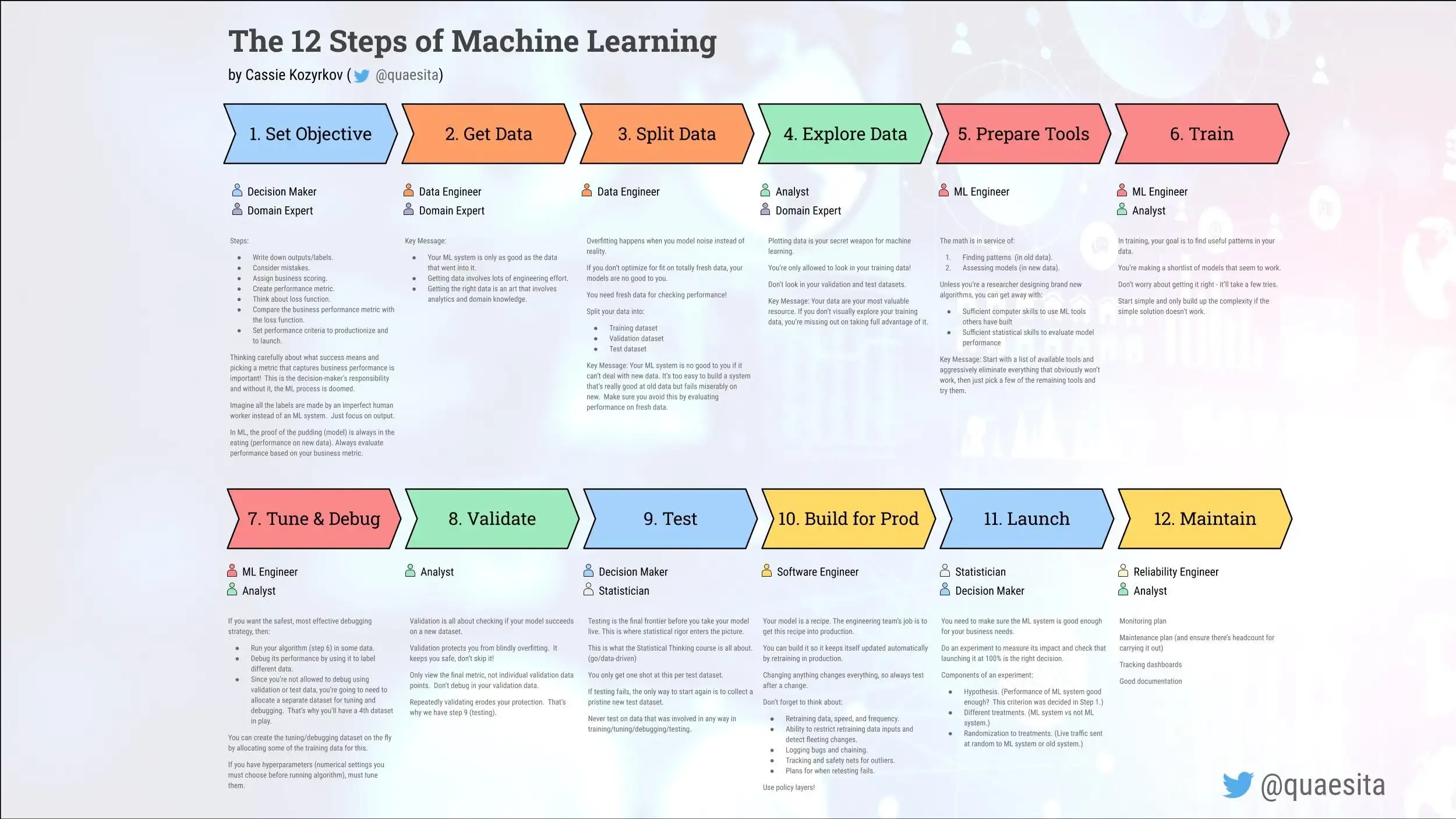Introduction to Machine Learning
“Machine intelligence is the last invention that humanity will ever need to make.”
-- Nick Bostrom
Introduction to ML
Machine learning (ML) is an advanced form of Artificial Intelligence (AI) that uses data to create models and make predictions. It has the ability to automate complex tasks such as facial recognition and natural language processing, providing businesses and individuals with powerful tools for decision-making.
Other applications of ML include computer vision, recommendation systems, fraud detection and more. ML has become increasingly popular in recent months due to its ability to create insights from large datasets, thus improving efficiency and accuracy of processes. As technology continues to evolve, machine learning will play an essential role in many aspects of our lives.
Remember! Machine learning is just a "thing labeler".
--------------------
Top 45 Machine Learning Interview Questions & Answers 2023:https://www.simplilearn.com/tutorials/machine-learning-tutorial/machine-learning-interview-questions
Table of Contents
- How Computer Algorithms Make Predictions (2:30)
- How Does Machine Learning Work? (5:00)
- Generative Adversarial Networks (8:22)
- What is Machine Learning? (1:40)
- Why use Machine Learning? (2:16)
- How to test Machine Learning? (4:59)
- What's inside the black box? (1:24)
- Simple linear regression (9:15)
- Multiple linear regression (5:10)
- Feature engineering (3:53)
- How to avoid ML pitfalls (4:25)
- Why do businesses fail at ML? (3:46)
- The 12 Steps of Machine Learning
- References
These computer programs use artificial intelligence to look for patterns in data without human instruction.
- predictive algorithms
- pattern recognition
How computer algorithms make predictions:
https://www.youtube.com/watch?v=WvhOtirThZY
Machine learning is a subset of artificial intelligence that automates data-driven predictions and decisions. It works by studying patterns in the data provided and using that information to detect certain relationships or trends. Machine learning utilizes algorithms to enable computers to learn from the data without requiring instructions on what data should be analyzed. Machine learning algorithms access large datasets to identify insights or patterns, then adjust their parameters according to the feedback they receive as part of the learning process. With each pass of the algorithm, it can gain insight into the patterns established by its data set, meaning it can improve decisions over time as more data is processed.
What is Machine Learning?
Why Use Machine Learning?
How to Test ML?
- AI / Models / ML / Neural Networks
- Machine Learning is a "thing labeler"
- You feed examples into the system
- The ML algorithm then builds "recipe"
- Machine Learning's job is to succeed on new data situations
- If old data, just look it up
- If no pattern in data, nothing can help
- If patterns that can be found and used
- Which models do we trust?
- Support Vector Classifier (SVM) or Decision Tree
- Which works on the new stuff?
- Look at accuracy
What's Inside the Black Box?
Simple Linear Regression
Multiple Linear Regression
- Math, lots of math
- Various algorithms to use
- Linear Regression
- Attitude for machine learning is to just continually test
- Just go for it!
- Line = Intercept + Slope * Weight
- Want information to do better
- Error = point - line
- RMSE: root mean squared error - to minimize error
- Optimization algorithm
- Need more information
- Need better information
- Try various features
Feature Engineering
Avoid ML Pitfalls
Businesses Fail at ML
- Inform the solution
- Model is only as good as the data that goes into it
- Use relevant examples
- Catch memorization
- Research ML vs Applied ML
- Data / Algorithms / Models / Predictions
- Focus on process
References
- Introduction to AI / ML (1:27:40)
https://www.youtube.com/watch?v=lYWt-aCnE2U - 12 steps of machine learning - Steps 0-5 (1:23:24)
https://www.youtube.com/watch?v=lIFLeHDanmA - 12 steps of machine learning - Steps 6-12 (2:00:46)
https://www.youtube.com/watch?v=fwK5xKUwQbw - AI algorithms (1:31:01)
https://www.youtube.com/watch?v=9PBqqx38WeI - Full Course (6:22:29)
https://youtu.be/1vkb7BCMQd0 - https://playground.tensorflow.org/


